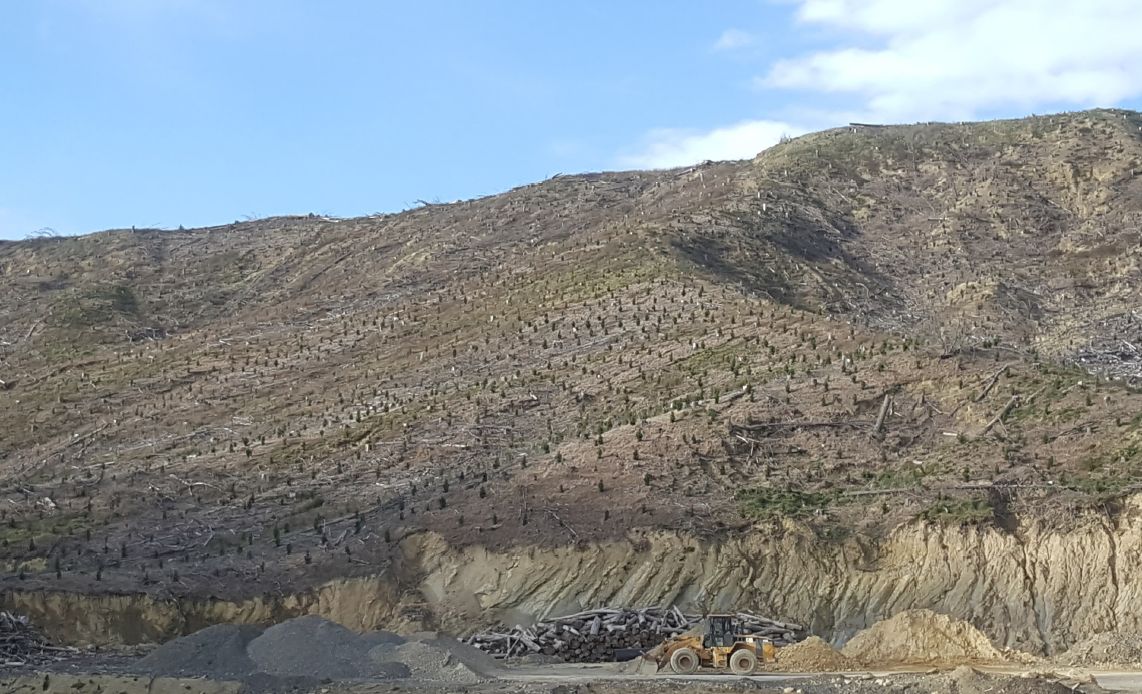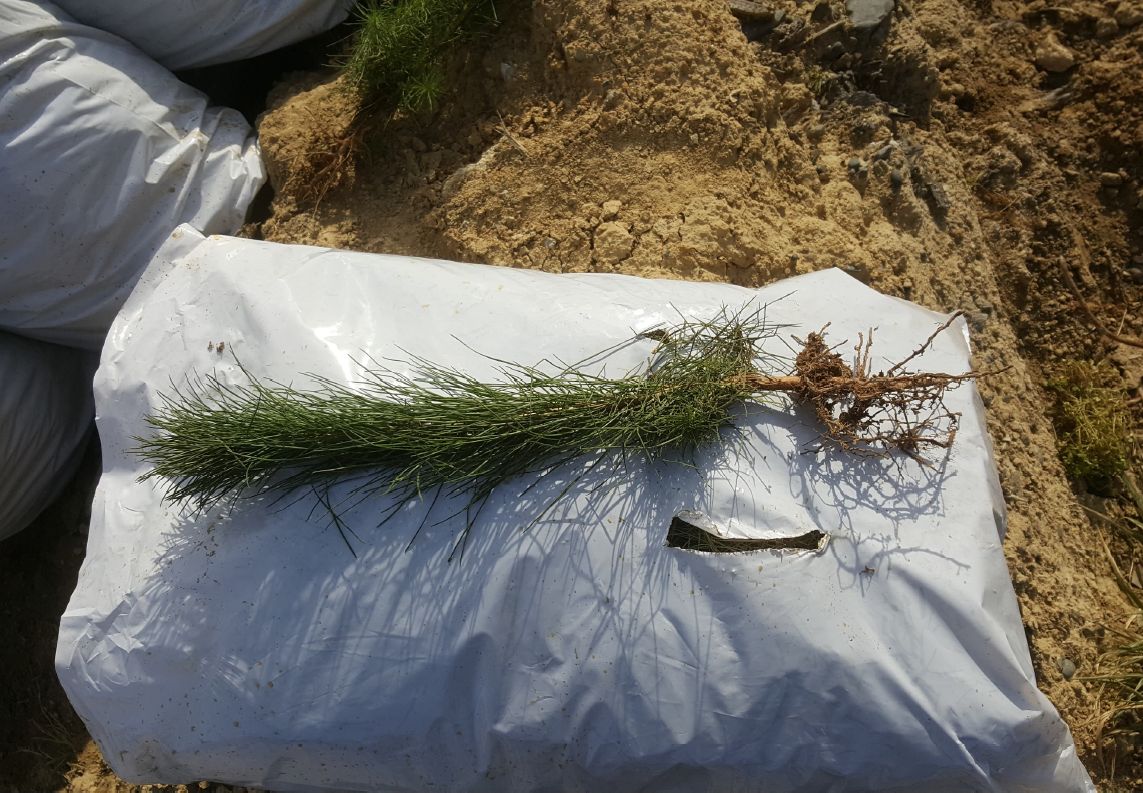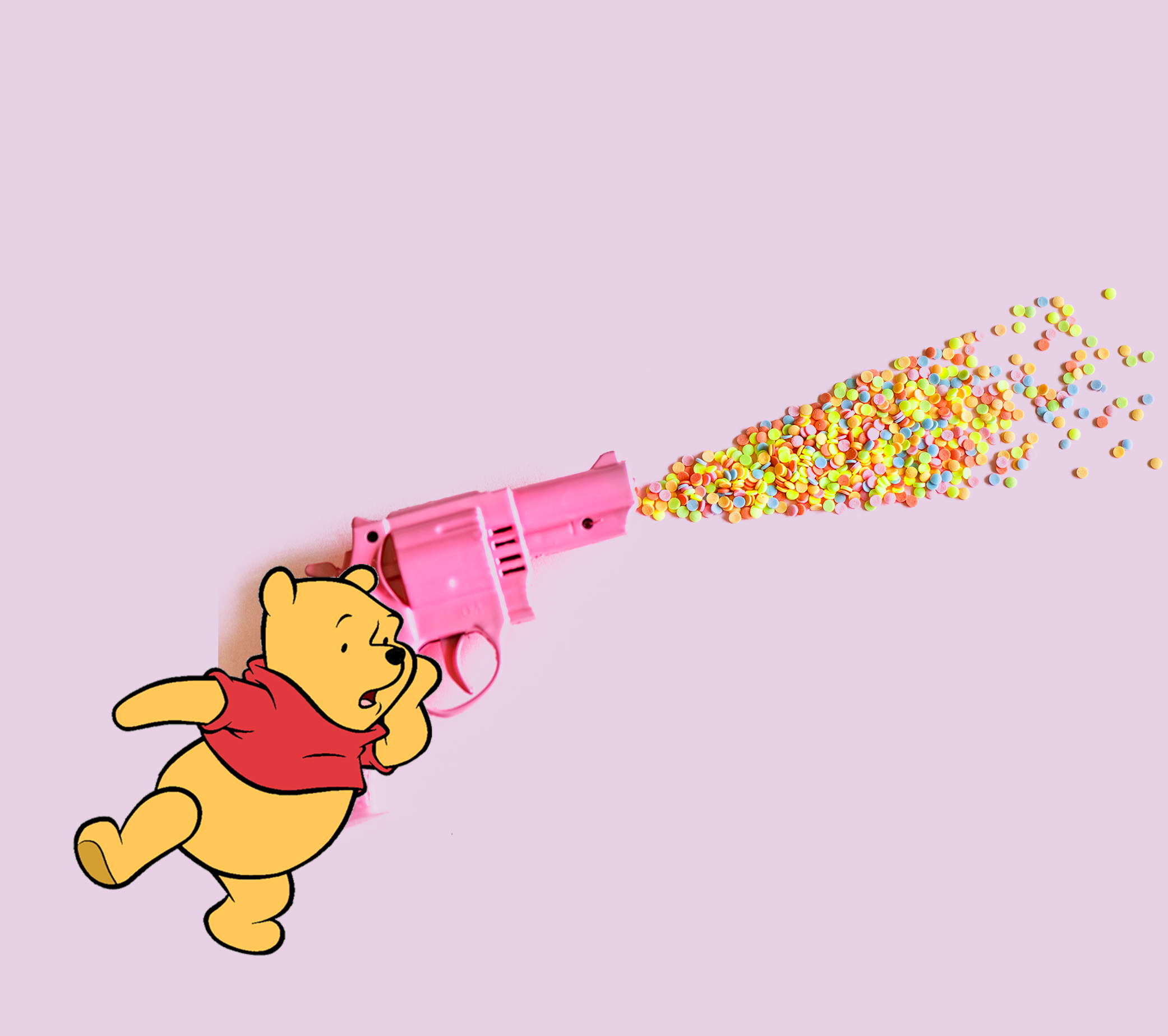
by Editor | 29 Oct, 2019 | Investment
Your KiwiSaver scheme has an interest in the Hapua Forest. 100,000 seedlings were planted this winter in the forest in the Hawkes Bay. This is the second of three plantings. Last year 62,500 seedlings were planted. Radiata pine is a versatile wood that’s easy to slice, mould, plane, glue, stain and paint. It is the world’s most widely planted softwood plantation tree and grows really well in New Zealand.
The 2019 planting happened over five days in winter and involved a crew of 36 on-site each day. The seedlings were around 30 cm tall at the time of planting. Depending on the terrain there were 750 to 950 planted on each hectare, and 117 hectares were planted. These seedlings will take up to 25 years to mature into trees for harvest.
 The seedlings were provided by a family business that’s been around for decades. Growing their seedlings sustainably has been a focus for Murrays Nurseries Woodville since the nursery started. The business takes pride in investing heavily in research and development in a number of key areas to increase productivity while remaining environmentally conscious. Part of their research is into the reduction in the use of fungicides and fertilisers.
The seedlings were provided by a family business that’s been around for decades. Growing their seedlings sustainably has been a focus for Murrays Nurseries Woodville since the nursery started. The business takes pride in investing heavily in research and development in a number of key areas to increase productivity while remaining environmentally conscious. Part of their research is into the reduction in the use of fungicides and fertilisers.
Because trees can store carbon, radiata pine plantations are useful ‘carbon sinks’. About 50% of the dry matter in the wood is carbon – largely cellulose (about 65%) and lignin (about 30%). Depending on growth rate and wood density, a hectare of pine trees locks up 4–7 tonnes of elemental carbon per year, which is equivalent to 15–26 tonnes of carbon dioxide absorbed from the atmosphere. A 1,000-hectare forest can absorb 15,000–26,000 tonnes of carbon dioxide per year.
When burnt as fuel in a car engine, petrol releases 2.62 kilograms of carbon dioxide per litre. On this basis, a typical car produces 1 tonne of carbon dioxide for every 5,555 km driven or 3 tonnes for an average year’s driving (16,666 km). This is equivalent to the amount of carbon dioxide that 33–60 pine trees absorb in one year.
Read more about Hapua Forest in our February 2019 article.
The Encyclopaedia of New Zealand https://teara.govt.nz/en/radiata-pine/page-1/
![Investment returns to 30 June 2019]()
by Editor | 8 Aug, 2019 | Investment
All funds had very pleasing returns for the June quarter with strong contributions from both shares and bonds.
Sharemarkets have been supported by lower interest rates and the prospect of global central bank easing. Shares have been recently trading at record highs despite evidence of a slowdown in global growth. Sharemarkets, however, remain sensitive to future developments.
The International Monetary Fund (IMF) nudged down its global growth forecasts in July to 3.2% for this year and 3.5% for 2020, citing the potential for adverse developments including further US-China trade tariffs, US auto tariffs, or a no-deal Brexit as items that could “sap confidence, weaken investment, dislocate global supply chains, and severely slow global growth below the baseline”.
Boris Johnson’s win in Britain’s conservative party leadership race did not erase concerns around the future of Britain (i.e. Brexit). The looming Brexit deadline (31 October) will no doubt come increasingly into focus.
The funds remain diversified, emphasise quality, and are cautiously invested with a focus on longer-term returns.
The investment returns (before fees and tax) to 30 June 2019 were:
The table with ID 6 not exists.

by Jo Cheramie | 8 Aug, 2019 | General, Investment, KiwiSaver
Many of us have grown up with the stories of Winnie the Pooh. If we didn’t, some of us may have seen the recent movie called ‘Christopher Robin’ which re-introduces Winnie the Pooh to a wider audience.
Many of us would be surprised to know that Winnie the Pooh owned a gun in 100 Acre Wood. We would be puzzled as to why they would own guns in that wood as they don’t hunt, and they don’t have target practice. Yet, in one account of Winnie the Pooh’s exploits, there was a knock on the door of his tree. Winnie answered the door … with a gun in his hands.
When A. A. Milne started writing about Winnie the Pooh in 1926, it was a different time with a different attitude toward guns. Like climate change, guns and munitions have increasingly become something that people are concerned about.
After the attacks on the Al-Noor Mosque and the Linwood Islamic Centre in Christchurch earlier this year there has been a growing concern about whether New Zealand KiwiSaver providers have invested funds in arms or munitions. There are some providers that have invested in this industry. But the Christian KiwiSaver Scheme is not one of those; it is among a small number of KiwiSaver providers that provide ethical investments and excludes munitions.
In a recent Colmar Brunton survey, over 70 percent of respondents answered that it was important for them that their KiwiSaver money was not invested in weapons. The survey found that a lot of members didn’t know if their funds were invested in munitions at all.
In New Zealand, there are over 2.7 million people signed up with KiwiSaver. The New Zealand Herald quoted a 2018 Consumer survey finding that around seven out of 10 people wanted their money invested ethically. But only around 8,600 people had signed up to specifically targeted ethical investment funds. While some people may hesitate in investing in ethical funds as they may feel these funds give lower returns, some of the best companies in the current market are those that are the most sustainable companies – they look after the environment and their employees. So thinking seems to be changing among investors.
Remember you can log into your account and check which fund your money is invested in. Or, if you prefer, give us a call on (0508) 738 473.
Winnie the Pooh image from www.disneyclips.com
![Investment returns to 30 June 2019]()
by Jo Cheramie | 8 Aug, 2019 | General, Investment
Some of you are asking what’s a PIR and what’s the fuss about them? Your PIR is your Prescribed Investor Rate and this is the tax rate that applies to investment earnings in certain types of investments including KiwiSaver. Having the wrong PIR will cost you money.
There are three PIR rates: 10.5%, 17.5% and 28%. As a general rule if your taxable income is above $48,000 then your PIR should be 28%.
It’s important to have the correct PIR. If your PIR is too high then you will be paying more tax than you need to. We understand that Inland Revenue hasn’t been giving refunds in these situations. If your PIR is too low then you could be facing a tax bill.
Has Inland Revenue been in touch with you about your PIR? Earlier this year Inland Revenue identified 450,000 New Zealanders who they determined were on the wrong PIR. Inland Revenue has started contacting those who appeared to have a PIR that was too low and advising how much tax they owe.
Inland Revenue recently replaced their computer system and that means it can now check your PIR against your personal taxable income. Your PIR is based on your income. If your income changes (up or down), this might mean a change in your PIR. Your residency status can also affect your PIR.
A guide to calculating your PIR is available to help you.
You can log into your Christian KiwiSaver Scheme account and check your PIR. If you need to change your PIR then send us an email. If you’re not sure then you can phone us on 0508 738 473.
![Investment returns to 30 June 2019]()
by Editor | 2 May, 2019 | Investment
It has been a very positive and pleasing quarter, a relief for most after the very shaky end to 2018, and a reminder to investors to focus on the longer term. Good returns were achieved by the funds in all periods to 31 March 2019.
The rebound in markets is put down to a number of factors including a reversal in the US Federal Reserve’s monetary policy stance, hope for a positive outcome in the U.S.-China trade deal negotiations and hope for further stimulus from the Chinese government, all factors that may lead to an increase in global growth in the second half of 2019. Given elevated asset prices and risks to future growth projections, we remain cautiously invested but alert i.e. we will be keeping an eye on economic data in the upcoming quarter to see it is strong enough to justify further gains.
Investment returns at 31 March 2019, before fees and tax:
The table with ID 7 not exists.
![Investment returns to 30 June 2019]()
by Editor | 1 Feb, 2019 | Investment
The December quarter saw a sharp drop in the value of shares which resulted in negative performances for the Growth and Balanced Funds. Strong performances in earlier times, however, ensured that returns remained positive in periods greater than 1 year. While our funds performed better than most for the quarter (reflecting our more conservative investment philosophy), negative performances are never nice to experience and can be frightening. However, they need to be kept in perspective i.e. remember the great and stable returns leading up to them! Diversification benefits were also evident in the quarter as gains on income assets (bonds) partially offset losses on growth assets (shares).
It’s important when there’s been a significant drop in the markets not to be alarmed. Remember that returns are generally positive over longer time frames. Interestingly, since 1 January this year share markets have rebounded significantly (by about 7% in January). What caused the bout of volatility throughout the December quarter? Even though a number of the concerns had been around for a while investors got more nervous in the quarter about some items including China and U.S. trade war developments, Brexit, global growth and monetary policy (particularly in the U.S.).
Large fluctuations in asset prices will inevitably occur again. In this more volatile environment, we remain extra vigilant, diversified and cautious in our approach to investing your monies.
Investment returns at 31 December 2018, before fees and tax:
The table with ID 8 not exists.
We have two important messages for you. Firstly, again, don’t panic and secondly make sure you are in the investment fund that best suits you. Changes in the investment markets don’t change your investor type. Changes in your personal circumstances are what influence your investor type.
Over time investment markets will have their ups and downs and occasionally the downs are large enough to result in a negative return. The December quarter is just one quarter. In the last 20 quarters (5 years), our Income Fund has had 18 positive quarters, the Balanced Fund had 17 and the Growth Fund had 16.


 The seedlings were provided by a family business that’s been around for decades. Growing their seedlings sustainably has been a focus for Murrays Nurseries Woodville since the nursery started. The business takes pride in investing heavily in research and development in a number of key areas to increase productivity while remaining environmentally conscious. Part of their research is into the reduction in the use of fungicides and fertilisers.
The seedlings were provided by a family business that’s been around for decades. Growing their seedlings sustainably has been a focus for Murrays Nurseries Woodville since the nursery started. The business takes pride in investing heavily in research and development in a number of key areas to increase productivity while remaining environmentally conscious. Part of their research is into the reduction in the use of fungicides and fertilisers.





